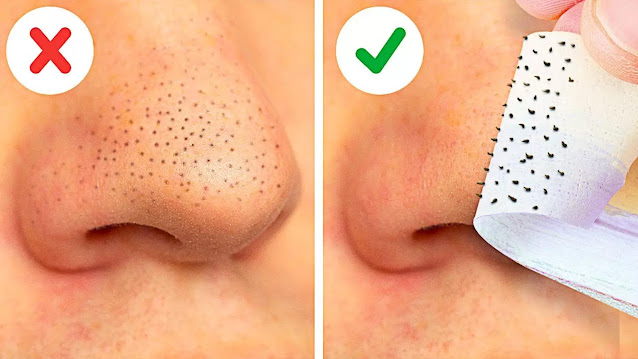You can watch video on YouTube: https://www.youtube.com/channel/UCeDRlH_Gm9zYwpGD-jlytHA/videos
You can watch video on Page: https://web.facebook.com/healthtv85
1. Understand Blood Sugar Basics:
Before diving into specific strategies, it's important to understand what blood sugar is and why it matters:
- Blood Sugar: Also known as blood glucose, it is the main sugar found in your blood and comes from the food you eat. Your body uses it for energy.
- Insulin: A hormone produced by the pancreas, insulin helps your cells use glucose for energy. When your body doesn't produce enough insulin or doesn't use it effectively, blood sugar levels can rise.
2. Monitor Your Blood Sugar Levels:
Regular monitoring is key to managing blood sugar levels effectively:
- Use a Glucometer: Regularly check your blood sugar using a glucometer. This can help you understand how different foods, activities, and medications affect your levels.
- Keep a Log: Maintain a log of your readings, noting the time of day, meals, activities, and any symptoms you experience. This information can help you and your healthcare provider make informed decisions.
3. Follow a Balanced Diet:
A balanced diet is fundamental to blood sugar control:
- Choose Complex Carbohydrates: Opt for whole grains, legumes, fruits, and vegetables. These foods have a lower glycemic index (GI) and cause a slower, more gradual rise in blood sugar levels.
- Limit Simple Sugars: Reduce intake of sugary foods and beverages like candy, soda, and pastries. These can cause rapid spikes in blood sugar.
- Include Fiber: Fiber slows down the digestion and absorption of carbohydrates, helping to maintain stable blood sugar levels. Good sources of fiber include whole grains, fruits, vegetables, and legumes.
- Eat Regularly: Avoid skipping meals and try to eat at regular intervals to maintain consistent blood sugar levels throughout the day.
4. Portion Control:
Managing portion sizes can prevent blood sugar spikes:
- Use Smaller Plates: Eating smaller portions can help control calorie intake and prevent overeating.
- Be Mindful of Serving Sizes: Learn and follow appropriate serving sizes for different food groups to avoid consuming excess carbohydrates.
5. Stay Hydrated:
Proper hydration is essential for blood sugar management:
- Drink Water: Water helps regulate blood sugar levels by aiding the kidneys in flushing out excess glucose through urine.
- Avoid Sugary Drinks: Steer clear of sugary beverages like soda and fruit juices, as they can cause rapid spikes in blood sugar.
6. Regular Physical Activity:
Exercise plays a crucial role in blood sugar control:
- Aerobic Exercise: Activities like walking, running, cycling, and swimming can help lower blood sugar levels and improve insulin sensitivity.
- Strength Training: Building muscle mass through resistance training can enhance your body's ability to use glucose for energy.
- Consistency: Aim for at least 150 minutes of moderate-intensity exercise per week, spread over several days.
7. Manage Stress:
Chronic stress can negatively impact blood sugar levels:
- Practice Relaxation Techniques: Activities like yoga, meditation, and deep breathing exercises can help reduce stress and improve blood sugar control.
- Get Enough Sleep: Aim for 7-9 hours of quality sleep per night to support overall health and blood sugar management.
8. Medication and Supplements:
If prescribed, take your medications as directed by your healthcare provider:
- Follow Your Prescriptions: Adhere to your medication regimen to help manage blood sugar levels effectively.
- Consider Supplements: Some supplements, like cinnamon, chromium, and berberine, have shown potential benefits for blood sugar control. Consult your healthcare provider before adding any supplements to your routine.
9. Limit Alcohol Consumption:
Alcohol can affect blood sugar levels in various ways:
- Moderation is Key: If you choose to drink, do so in moderation and be mindful of the carbohydrate content in alcoholic beverages.
- Monitor Blood Sugar: Keep an eye on your blood sugar levels when consuming alcohol, as it can cause both spikes and drops.
10. Work with Your Healthcare Team:
Collaborating with your healthcare team is essential for effective blood sugar management:
- Regular Check-ups: Schedule regular visits with your healthcare provider to monitor your progress and make necessary adjustments to your treatment plan.
- Diabetes Education: Consider participating in a diabetes education program to learn more about managing your condition and making informed decisions.
Conclusion:
Controlling blood sugar levels involves a combination of healthy eating, regular exercise, stress management, and proper medication use. By adopting these lifestyle changes and working closely with your healthcare team, you can effectively manage your blood sugar levels and improve your overall health.
Thank you for watching! If you found this video helpful, please like, comment, and subscribe for more health and wellness tips. Share your experiences and tips for managing blood sugar in the comments below. Stay healthy and take control of your blood sugar!














